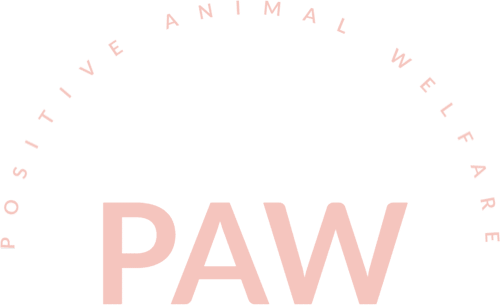
Rault, J.L., Hintze, S., Camerlink, I. and Yee, J.R., 2020. Positive welfare and the like: distinct views and a proposed framework. Frontiers in veterinary science
Lawrence, A. B., Vigors, B., & Sandøe, P. (2019). What Is so Positive about Positive Animal Welfare?—A Critical Review of the Literature. Animals, 9(10), 783.
Rault, J.L., Hintze, S., Camerlink, I. and Yee, J.R., 2020. Positive welfare and the like: distinct views and a proposed framework. Frontiers in veterinary science,
Vigors, B., Sandøe, P., & Lawrence, A. B. (2021). Positive Welfare in Science and Society: Differences, Similarities and Synergies. Frontiers in Animal Science, 2, 738193.
Cooper, R., Wemelsfelder, F. (2020). Qualitative Behaviour Assessment as an indicator of animal emotional welfare in farm assurance. Livestock 25 (4), 2-5.
Shaw, N., Wemelsfelder, F., Riley, L. (2022). Bark to the future: The welfare of domestic dogs during interaction with a positively reinforcing artificial agent. Appl. Anim. Behav. Sci. 249, 105595.
Des Roches et al. (2018). Dairy cows under experimentally-induced Escherichia coli mastitis show negative emotional states assessed through Qualitative Behaviour Assessment. Appl. Anim. Behav. Sci. 206, pp.1-11.
Keeling, L., Evans, A., Forkman, B., Kjaernes, U. (2013). Welfare Quality® principles and criteria. Wageningen Publishers: Wageningen, The Netherlands.
Wemelsfelder, F. 2007. How animals communicate quality of life: the qualitative assessment of animal behaviour. Anim. Welf. 16(S) 25-31.
Fleming, P.A., Clarke, T., Wickham, S.L., Stockman, C.A., Barnes, A.L., Collins, T. and Miller, D.W., (2016). The contribution of qualitative behavioural assessment to appraisal of livestock welfare. Animal Production Science, 56(10): 1569-1578.
Wemelsfelder F., Hunter T.E.A., Mendl M.T., Lawrence A.B. (2001). Assessing the ‘whole animal’: A free choice profiling approach. Anim. Behav. 2001;62: 209–220.
Fraser, D., & Duncan, I. (1998). “Pleasures”, “Pains” and Animal Welfare: Toward a Natural History of Affect. Animal Welfare, 7, 383–396.
Mellor, D. (2014). Enhancing animal welfare by creating opportunities for positive affective engagement. New Zealand Veterinary Journal, 63(1), 3–8.
Report of the Technical Committee to enquire into the welfare of animals kept under intensive livestock husbandry systems. Chairman: Professor F. W. Rogers Brambell. Cmnd. 2836, December 3 1965. Her Majesty’s Stationery Office, London. Referred to hereafter as the Brambell report.
Newberry, R.C., (1995). Environmental enrichment: Increasing the biological relevance of captive environments. Applied Animal Behaviour Science, 44(2-4), pp.229-243.
Kempermann, G. (2019). Environmental enrichment, new neurons and the neurobiology of individuality. Nature Reviews Neuroscience, 20, pages235–245.
van de Weerd, H. & Ison, S. (2019). Providing Effective Environmental Enrichment to Pigs: How Far Have We Come? ANIMALS, 9(5), 254.
Bombail, V. et al. 2019. Odour conditioning of positive affective states: rats can learn to associate an odour with being tickled. PLoS One, 14(6), p.e0212829.
Cloutier, S. et al. (2018). Tickling, a technique for inducing positive affect when handling rats. JoVE (Journal of Visualized Experiments), (135), p.e57190.
Pellis, S. and Pellis, V. (2013). The playful brain: venturing to the limits of neuroscience. Simon and Schuster.
Bombail, V., et al. (2022). Stage 1 Registered Report: Refinement of tickling protocols to improve positive animal welfare in laboratory rats. F1000Research, 11, 1053.
Bombail, V. et al. (2021). Crying With Laughter: Adapting the Tickling Protocol to Address Individual Differences Among Rats in Their Response to Playful Handling. Frontiers in Veterinary Science, 8, 677872.
Burgdorf, J., & Panksepp, J. (2001). Tickling induces reward in adolescent rats. Physiology & Behavior, 72(1–2), 167–173.
Turner, P. V. (2020). Moving Beyond the Absence of Pain and Distress: Focusing on Positive Animal Welfare. ILAR Journal.
Russell, W. M. S., & Burch, R. L. (1959). The principles of humane experimental technique. Methuen.
Skevington, S. M., & Böhnke, J. R. (2018). How is subjective well-being related to quality of life? Do we need two concepts and both measures? Social Science & Medicine, 206(Int. J. Meth. Psychiatr. Res. 20 1 2011), 22–30.
Lawrence, A. B., Vigors, B., & Sandøe, P. (2019). What Is so Positive about Positive Animal Welfare?—A Critical Review of the Literature. Animals, 9(10), 783.
Edgar, J. L., Mullan, S. M., Pritchard, J. C., McFarlane, U. J., & Main, D. C. (2013). Towards a ‘Good Life’ for Farm Animals: Development of a Resource Tier Framework to Achieve Positive Welfare for Laying Hens. Animals, 3(3), 584–605.
Berridge, K. C., Robinson, T. E., & Aldridge, J. (2009). Dissecting components of reward: “liking”, “wanting”, and learning. Current Opinion in Pharmacology, 9(1), 65–73.
Mendl, M., & Paul, E. S. (2020). Animal affect and decision-making. Neuroscience & Biobehavioral Reviews, 112, 144–163.
Fredrickson, B. (2004). The broaden–and–build theory of positive emotions. Philosophical Transactions of the Royal Society of London B: Biological Sciences, 359(1449), 1367–1377.
Rowe, E., & Mullan, S. (2022). Advancing a “Good Life’’ for Farm Animals: Development of Resource Tier Frameworks for On-Farm Assessment of Positive Welfare for Beef Cattle, Broiler Chicken and Pigs. ANIMALS, 12(5), 565.
FAWC (2009). Farm Animal Welfare in Great Britain: Past, Present and Future. FAWC, 17 Smith Square, London.
Appleby, M. C., & Sandøe, P. (2002). Philosophical debate on the nature of well-being: Implications for animal welfare. Animal Welfare, 11, 283–294.
Sandøe, P., 1999. “Quality of life – three competing views,” Ethical Theory and Moral Practice, 2(1), pp. 11–23.
Webb, L. E., Veenhoven, R., Harfeld, J., & Jensen, M. (2018). What is animal happiness? Annals of the New York Academy of Sciences.
Yeates, J. W., & Main, D. C. J. (2008). Assessment of positive welfare: A review. The Veterinary Journal, 175(3), 293–300.
Vere, A. J. de, & Kuczaj, S. A. (2016). Where are we in the study of animal emotions? Wiley Interdisciplinary Reviews: Cognitive Science, 7(5), 354–362.
Byrne, R. W. (2015). The what as well as the why of animal fun. Current Biology, 25(1), R2–R4.
Martin, P., & Bateson, P. (1985). The ontogeny of locomotor play behaviour in the domestic cat. Anim. Behav. 33(2), 502–510.